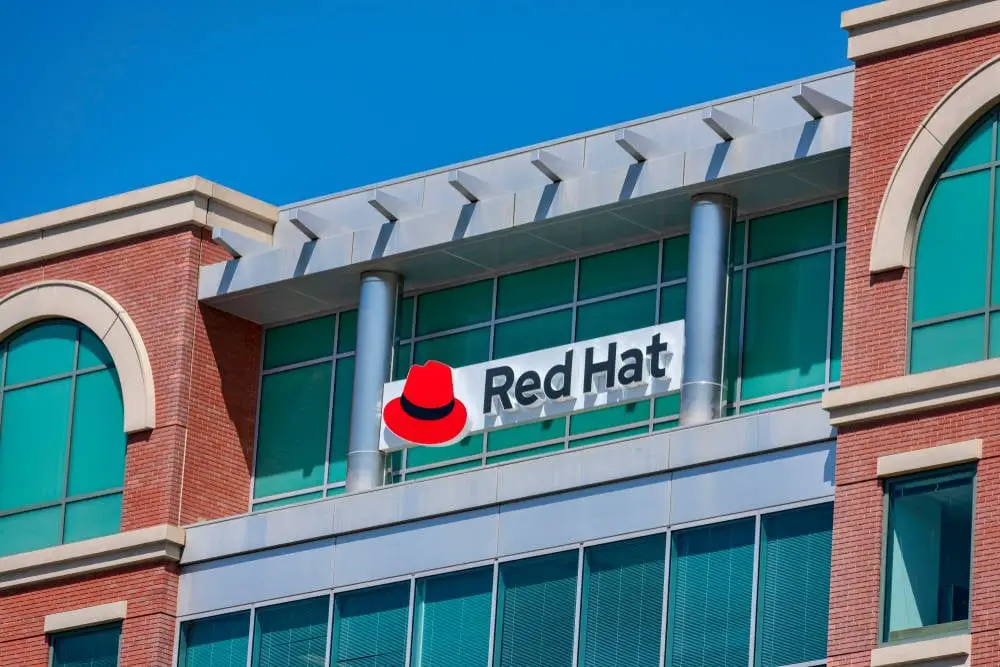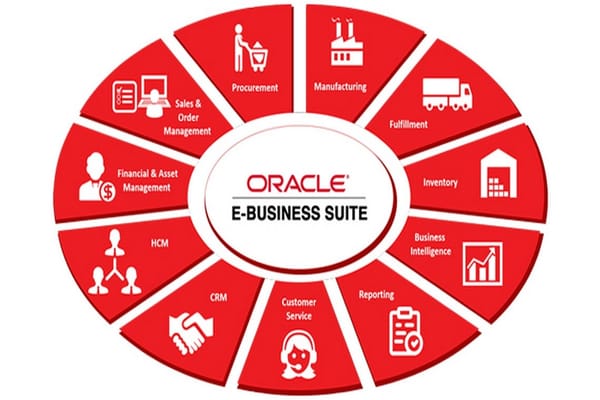Red Hat GitLab Breach: Crimson Collective's 570GB Heist Exposes 800+ Enterprise Customers

Executive Summary
In October 2025, the extortion group Crimson Collective breached Red Hat's consulting GitLab instance, claiming to have exfiltrated 570GB of compressed data from over 28,000 internal repositories. The breach exposed approximately 800 Customer Engagement Reports (CERs) containing sensitive infrastructure details, authentication credentials, and network configurations for major enterprises and government organizations worldwide. This incident represents one of the most significant consulting-related breaches in recent history, with potential downstream impacts affecting hundreds of Fortune 500 companies.
The Breach Timeline
Initial Compromise
- Mid-September 2025: Crimson Collective gains unauthorized access to Red Hat's self-managed GitLab Community Edition instance
- September 24, 2025: Crimson Collective creates Telegram channel, claims Nintendo website defacement
- September 25, 2025: Group announces breach of Claro Colombia telecommunications
- October 1, 2025: Public disclosure of Red Hat breach via Telegram
- October 2, 2025: Red Hat confirms security incident, begins remediation
- October 10, 2025: Ransom deadline passes without payment
This timeline mirrors the rapid exploitation patterns we've documented in GitHub's battlefield of AI-powered malware attacks, where threat actors moved from initial compromise to widespread damage in similarly compressed timeframes.
What Was Stolen
The breach compromised Red Hat Consulting's internal collaboration infrastructure, exposing:
Volume and Scope
- 570GB of compressed data
- 28,000+ internal Git repositories
- 800 Customer Engagement Reports (CERs)
- 3.4 million files across 370,000+ directories
- 5 years of consulting data (2020-2025)
Critical Data Types
- Network infrastructure diagrams
- Authentication tokens and API keys
- Database connection strings and URIs
- VPN configurations and profiles
- Ansible automation playbooks
- OpenShift cluster configurations
- CI/CD pipeline secrets
- Container registry credentials
- SSL/TLS certificates
- SSH keys and access credentials
Affected Organizations
The leaked data analysis reveals systematic exposure across multiple sectors, with major institutions including Bank of America, HSBC, Citigroup, AT&T, T-Mobile, Verizon, Kaiser Permanente, Mayo Clinic, and numerous U.S. government entities including the Department of Homeland Security, NASA, and the U.S. Navy.
Government & Defense
- Department of Homeland Security
- National Institute of Standards and Technology (NIST)
- National Security Agency (NSA)
- U.S. Navy and Marine Corps
- NASA (including JPL and Johnson Space Center)
- House of Representatives
- Department of Energy
Financial Services
- Bank of America
- HSBC
- Citigroup
- Charles Schwab
- Fidelity
- American Express
- Credit Suisse
Healthcare
- Kaiser Permanente
- Mayo Clinic
- CVS Aetna
- Anthem
- UnitedHealth Group
Technology & Telecommunications
- IBM
- Cisco
- Intel
- AT&T
- T-Mobile
- Verizon
- Samsung
The Crimson Collective: Threat Actor Profile
Group Origins
Crimson Collective has recently aligned itself with Scattered Lapsus$ Hunters, a cybercriminal collective comprised of members from Scattered Spider, Lapsus$, and Shiny Hunters groups. The group emerged in September 2025 with a series of high-profile attacks designed to establish credibility. This alliance follows patterns we've analyzed in our coverage of Scattered Spider's pivot to insurance sectors and the devastating Drift supply chain attack that compromised major security vendors.
Connection to Lapsus$
Security researcher Brian Krebs noted that Crimson Collective's Telegram posts were signed 'Miku', a handle associated with UK-based 19-year-old Thalha Jubair, who was charged in connection with Scattered Spider and is currently remanded in custody pending trial. This connection suggests either:
- Direct involvement despite custody status
- Use of established personas by new actors
- Evolution of the Lapsus$ group structure
Operational Tactics
- Social Engineering: Voice phishing (vishing) for initial access
- Tool Usage: TruffleHog for credential discovery
- AWS Focus: Rapid7 observed the group targeting AWS cloud environments using leaked long-term access keys and exploiting overly permissive IAM configurations. This mirrors tactics documented in our analysis of Amazon Q Developer's security breach and broader cloud infrastructure vulnerabilities.
- Extortion Model: Data theft followed by ransom demands with public shaming
Previous Targets
- Nintendo (September 2025)
- Claro Colombia (50M+ client records)
- Links to earlier Lapsus$ victims: Vodafone, Microsoft, Ubisoft
Technical Analysis
Attack Vector
While Red Hat hasn't disclosed the initial compromise method, evidence suggests:
- Exploitation of self-managed GitLab instance vulnerabilities
- Possible use of leaked authentication tokens
- No involvement of GitLab's managed infrastructure
This attack vector parallels the Microsoft SharePoint zero-day exploits we covered in July 2025, where self-managed instances became the primary attack surface rather than cloud-hosted solutions.
GitLab's Response
GitLab confirmed there was no breach of their managed systems, emphasizing that Red Hat used a self-managed GitLab Community Edition instance, for which customers are responsible for security patches, access controls, and maintenance.
Infrastructure Impact
The stolen CERs provide attackers with:
- Complete network topology understanding
- Known vulnerability locations
- Authentication bypass methods
- Direct access paths to critical systems
Red Hat's Response
Immediate Actions
Red Hat confirmed detecting unauthorized access to a GitLab instance used for internal Red Hat Consulting collaboration, promptly launching an investigation, removing unauthorized access, isolating the instance, and contacting appropriate authorities.
Official Statements
- Breach limited to consulting GitLab instance
- Software supply chain remains secure
- No impact on product downloads or other services
- Customer notifications initiated
Key Clarifications
- Not related to CVE-2025-10725 (OpenShift AI vulnerability)
- No personal information found in initial investigation
- Consulting engagement data may include project specifications and code snippets
Downstream Risks
Immediate Threats
- Credential Exploitation: All exposed tokens remain valid until rotated
- Infrastructure Mapping: Attackers possess detailed blueprints
- Supply Chain Attacks: Potential pivot to customer environments
- Targeted Ransomware: Organizations now profiled for attacks
These downstream risks align with patterns identified in our analysis of common data breach methods and the unprecedented surge in August 2025 attacks.
Long-term Implications
- Loss of security through obscurity
- Increased targeted attack likelihood
- Compliance and regulatory scrutiny
- Trust erosion in consulting relationships
Mitigation Requirements
For Affected Organizations
Immediate Actions (0-24 hours)
- Rotate ALL credentials shared with Red Hat Consulting
- Audit access logs for suspicious activity since September
- Implement enhanced monitoring on documented systems
- Activate incident response teams
Short-term (1-7 days)
- Review and update network segmentation
- Implement additional MFA on critical systems
- Conduct vulnerability assessments on exposed infrastructure
- Update security baselines based on exposed configurations
Long-term (7-30 days)
- Complete infrastructure security audit
- Consider network architecture redesign
- Review third-party access policies
- Implement zero-trust principles
Industry-Wide Lessons
- Consulting Data Sensitivity: CERs contain crown jewel information
- Third-Party Risk: Vendor breaches create cascading impacts
- Self-Managed Risks: Organizations must maintain their own instances
- Documentation Security: Technical documents need encryption at rest
The Extortion Campaign
Ransom Attempts
The attackers attempted to contact Red Hat through official channels but received only generic vulnerability disclosure responses, with support tickets assigned to legal and security teams but allegedly going unanswered.
Public Pressure
- Data samples released on Telegram
- Directory listings published as proof
- Victim shaming on dark web portals
- Collaboration with Scattered Lapsus$ Hunters for visibility
Current Status
- Red Hat did not pay the ransom
- Partial data releases ongoing
- Full dump threatened but not yet released
- Group remains active with new targets
Broader Implications
Consulting Industry Impact
This breach highlights critical vulnerabilities in the consulting model:
- Consultants require deep access to client systems
- Documentation contains sensitive operational details
- Engagement reports become permanent vulnerability records
- Trust relationships create expanded attack surfaces
Regulatory Considerations
- Potential GDPR violations for EU customers
- SEC disclosure requirements for public companies
- Government contractor notification obligations
- State breach notification laws triggered
Organizations should consult our US State Breach Notification Requirements Tracker for specific compliance obligations and review our comprehensive analysis of 2025's major attacks for broader context.
Market Response
- Increased scrutiny of consulting relationships
- Demand for encrypted documentation practices
- Zero-trust adoption acceleration
- Cyber insurance implications
Conclusion
The Red Hat GitLab breach represents a watershed moment in consulting-related cybersecurity incidents. As GitGuardian's analysis notes, internal repositories contain 8-10x more secrets than public repositories, with consulting engagements frequently embedding customer credentials in proof-of-concept code. The exposure of 800+ enterprise customers' infrastructure details creates unprecedented downstream risks.
This incident joins the ranks of history's most devastating data breaches, demonstrating how modern supply chain attacks can multiply impact across hundreds of organizations. Similar to the Microsoft MAPP crisis and China-based engineer exposure, this breach highlights the risks inherent in trusted third-party relationships.
Organizations must recognize that consulting deliverables are not just documentation—they're comprehensive attack playbooks in the wrong hands. The Crimson Collective's success demonstrates that targeting service providers offers attackers multiplicative returns, compromising hundreds of organizations through a single breach.
As threat actors continue consolidating into larger, more sophisticated groups like the Scattered Lapsus$ Hunters alliance, the consulting and services industry must fundamentally reimagine how sensitive client data is handled, stored, and protected. The age of assuming consulting documentation is low-risk is definitively over.
Recommendations
For Red Hat Customers
- Assume breach until proven otherwise
- Implement continuous security monitoring
- Review all Red Hat consulting deliverables
- Consider legal counsel for liability assessment
For the Industry
- Encrypt all consulting documentation at rest
- Implement automatic credential rotation
- Adopt zero-knowledge architectures for client data
- Regular security audits of consulting infrastructure
For Security Teams
- Map all third-party documentation exposure
- Implement honeytokens in shared documents
- Monitor for infrastructure reconnaissance
- Prepare breach response scenarios
This analysis is based on publicly available information as of October 2025. As the situation continues to evolve, organizations should monitor official Red Hat communications and coordinate with their security teams for the latest guidance.
References
- Red Hat Security Advisory (October 2, 2025)
- GitGuardian Breach Analysis (October 7, 2025)
- Anomali Threat Intelligence Report (October 2025)
- Dark Reading Investigation Series (October 2025)
- Krebs on Security: ShinyHunters Analysis (October 2025)
Related Articles on Breached.Company
Supply Chain & DevSecOps Security
- When GitHub Became the Battlefield: AI-Powered Malware and Workflow Hijacking
- Beyond the Headlines: Security Giants Fall in Drift's Supply Chain Attack
- Amazon Q Developer Extension Security Breach
Microsoft & Cloud Infrastructure Incidents
- The SharePoint Hack That Changed Global Cybersecurity
- Microsoft SharePoint Zero-Day Attack: Critical Infrastructure Under Siege
- When the Cloud Falls: Third-Party Dependencies
- The Silent Risk: Microsoft's China-Based Engineers Exposed Pentagon Cloud
Ransomware & Threat Actor Analysis
- DOJ Investigation Exposes Corruption in Ransomware Negotiation Industry
- August 2025: A Month of Unprecedented Cyber Attacks
- Major Cyber Attacks 2025: Comprehensive Analysis





